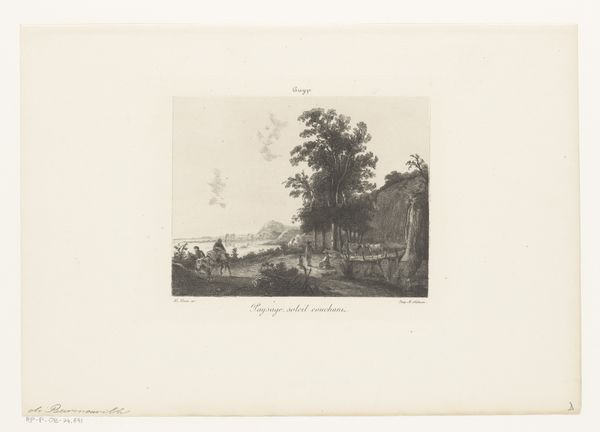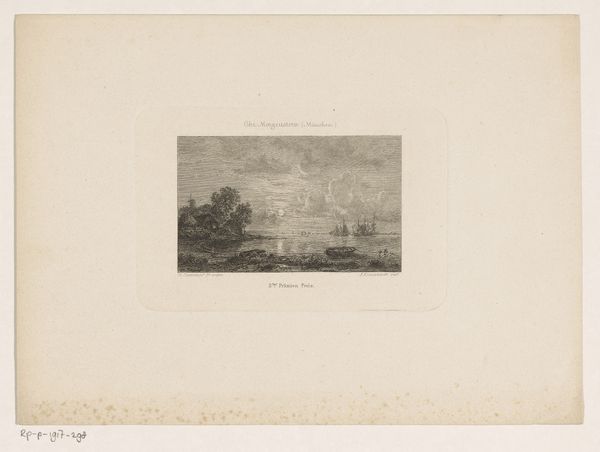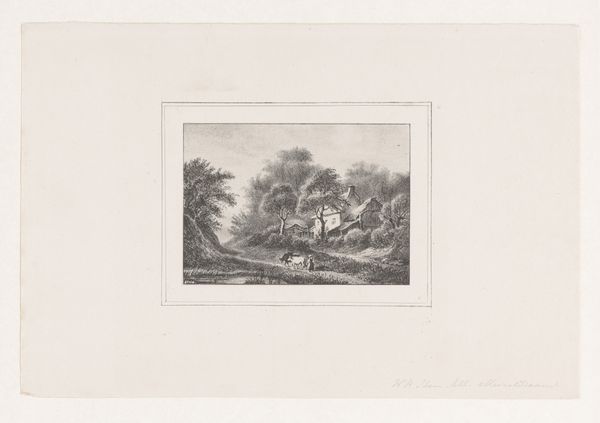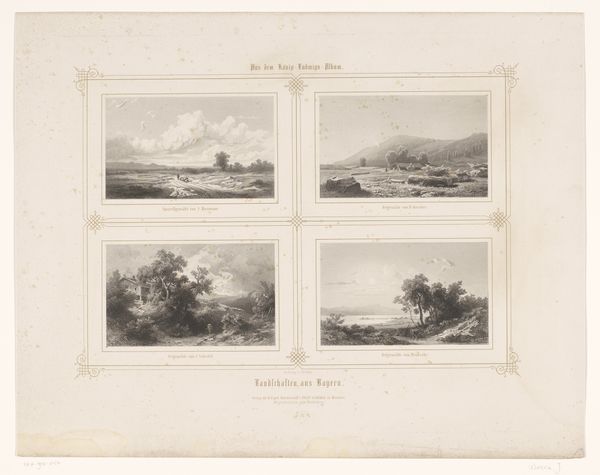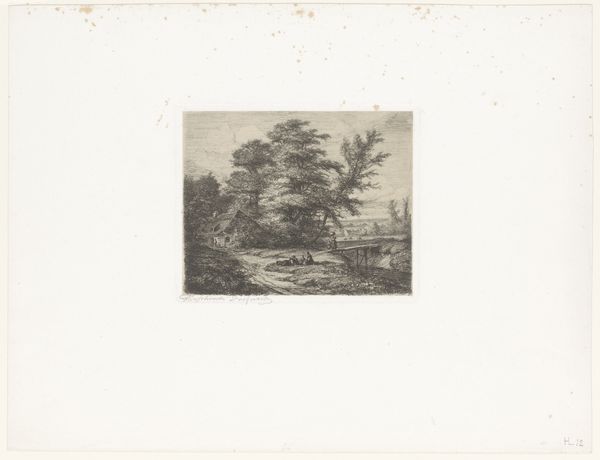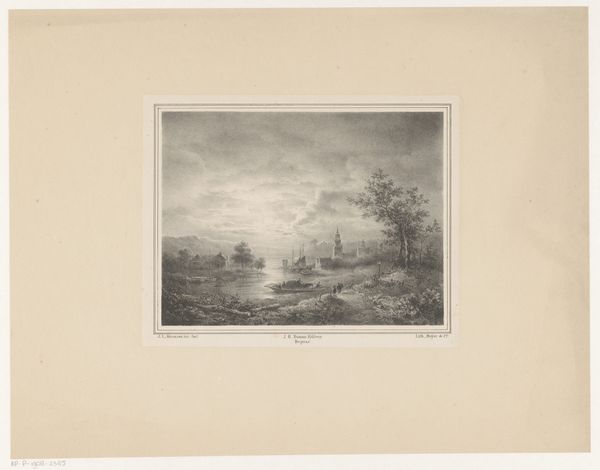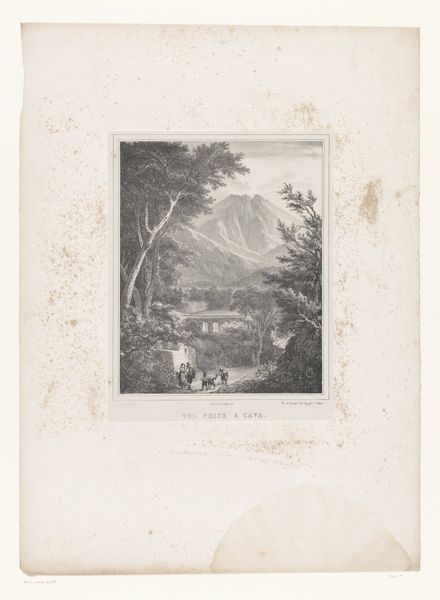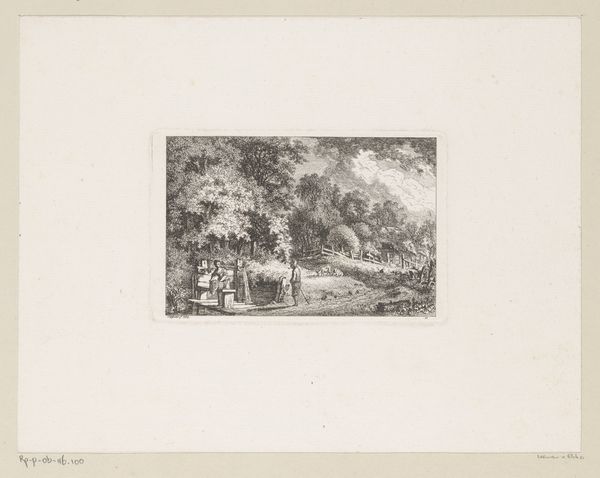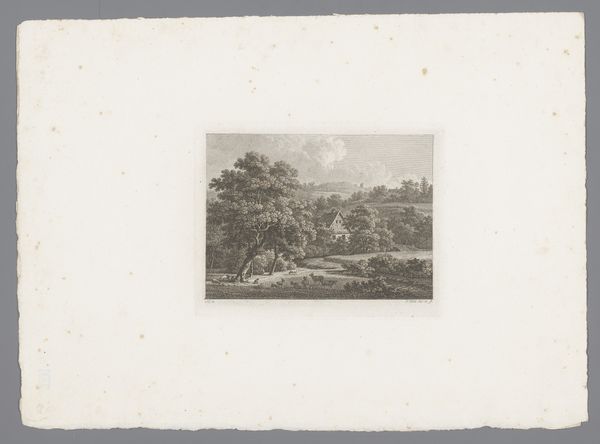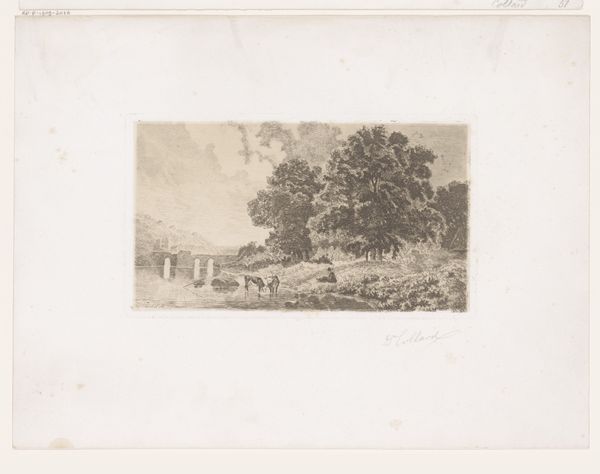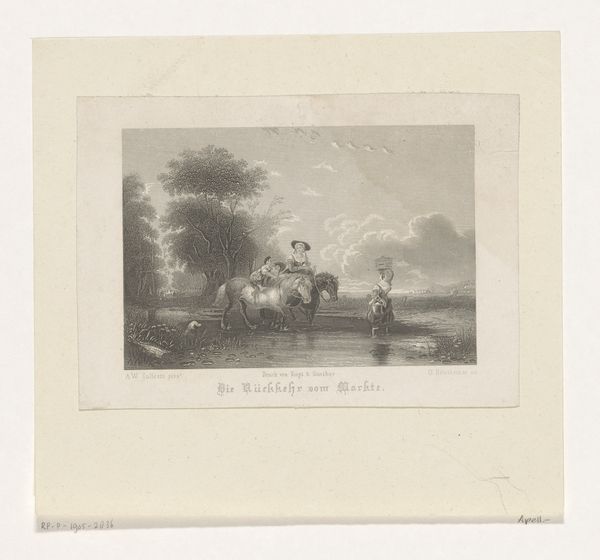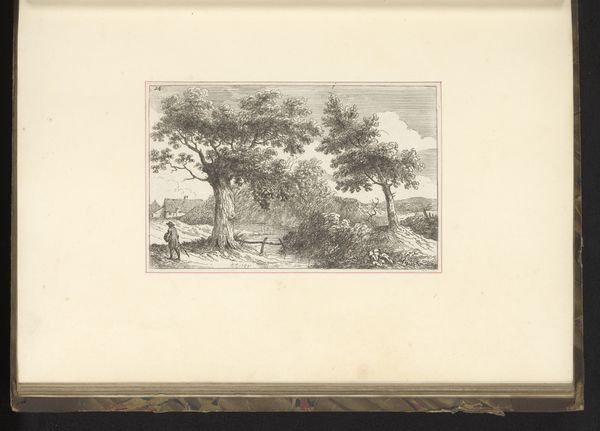
print, etching, engraving
# print
#
etching
#
landscape
#
romanticism
#
mountain
#
engraving
Dimensions: height 430 mm, width 575 mm
Copyright: Rijks Museum: Open Domain
Curator: This is "Gezicht op Amalfi," a print made between 1824 and 1826 by Andréas Pic. It's a striking landscape scene. What strikes you initially? Editor: The tonal range is masterful; it evokes a peaceful, almost melancholy atmosphere. The soft light suggests a liminal time of day, maybe dawn or dusk. It's meticulously crafted, emphasizing clarity of line and shape. Curator: It certainly encapsulates Romantic ideals. Artists were drawn to the sublime in nature, and Italy was seen as a kind of spiritual home, away from the rapid industrialization of Northern Europe. The print captures that longing. Editor: Yes, you can read the mountains as sublime, framing the humble human activity occurring along the bridge. I’m drawn to the composition, with the bridge acting as a literal and figurative link between elements of the image. There is such an even balance achieved, formally speaking. Curator: Indeed. The bridge not only connects the human world, represented by the mill and figures crossing, with the natural world of the mountains but the figures shown seem intentionally selected. It highlights how rural areas continue to necessitate collaboration with animals for the transit of goods, for example. Editor: And the technical skill in rendering that watermill! The detail of light playing on its surface—the etching is phenomenal. Semiotically, what could the presence of a watermill, a site of both creation and ruin, symbolize in conjunction with that small familial cluster crossing? Curator: That very synthesis between nature and human progress represents an intriguing commentary when we consider the politics surrounding environmental concerns present at the time and ever since. How do we engage with these sublime and abundant spaces responsibly? This print, therefore, operates as a document of its time. Editor: It really brings up complex interpretations in a simple rendering of landscape. Thank you. Curator: My pleasure, let’s move on to the next.
Comments
No comments
Be the first to comment and join the conversation on the ultimate creative platform.

